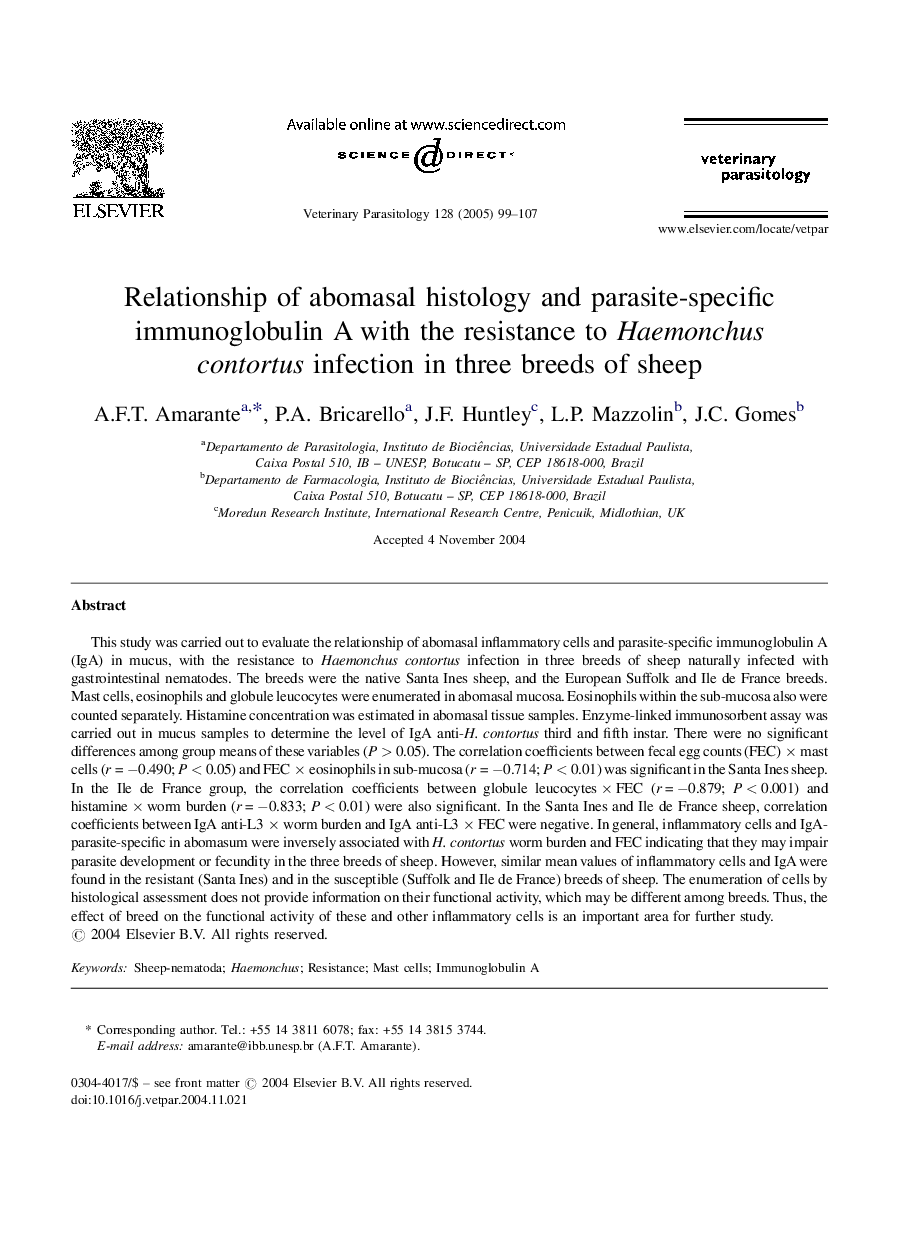| Article ID | Journal | Published Year | Pages | File Type |
|---|---|---|---|---|
| 8991166 | Veterinary Parasitology | 2005 | 9 Pages |
Abstract
This study was carried out to evaluate the relationship of abomasal inflammatory cells and parasite-specific immunoglobulin A (IgA) in mucus, with the resistance to Haemonchus contortus infection in three breeds of sheep naturally infected with gastrointestinal nematodes. The breeds were the native Santa Ines sheep, and the European Suffolk and Ile de France breeds. Mast cells, eosinophils and globule leucocytes were enumerated in abomasal mucosa. Eosinophils within the sub-mucosa also were counted separately. Histamine concentration was estimated in abomasal tissue samples. Enzyme-linked immunosorbent assay was carried out in mucus samples to determine the level of IgA anti-H. contortus third and fifth instar. There were no significant differences among group means of these variables (P > 0.05). The correlation coefficients between fecal egg counts (FEC) Ã mast cells (r = â0.490; P < 0.05) and FEC Ã eosinophils in sub-mucosa (r = â0.714; P < 0.01) was significant in the Santa Ines sheep. In the Ile de France group, the correlation coefficients between globule leucocytes Ã FEC (r = â0.879; P < 0.001) and histamine Ã worm burden (r = â0.833; P < 0.01) were also significant. In the Santa Ines and Ile de France sheep, correlation coefficients between IgA anti-L3 Ã worm burden and IgA anti-L3 Ã FEC were negative. In general, inflammatory cells and IgA-parasite-specific in abomasum were inversely associated with H. contortus worm burden and FEC indicating that they may impair parasite development or fecundity in the three breeds of sheep. However, similar mean values of inflammatory cells and IgA were found in the resistant (Santa Ines) and in the susceptible (Suffolk and Ile de France) breeds of sheep. The enumeration of cells by histological assessment does not provide information on their functional activity, which may be different among breeds. Thus, the effect of breed on the functional activity of these and other inflammatory cells is an important area for further study.
Related Topics
Life Sciences
Agricultural and Biological Sciences
Animal Science and Zoology
Authors
A.F.T. Amarante, P.A. Bricarello, J.F. Huntley, L.P. Mazzolin, J.C. Gomes,
